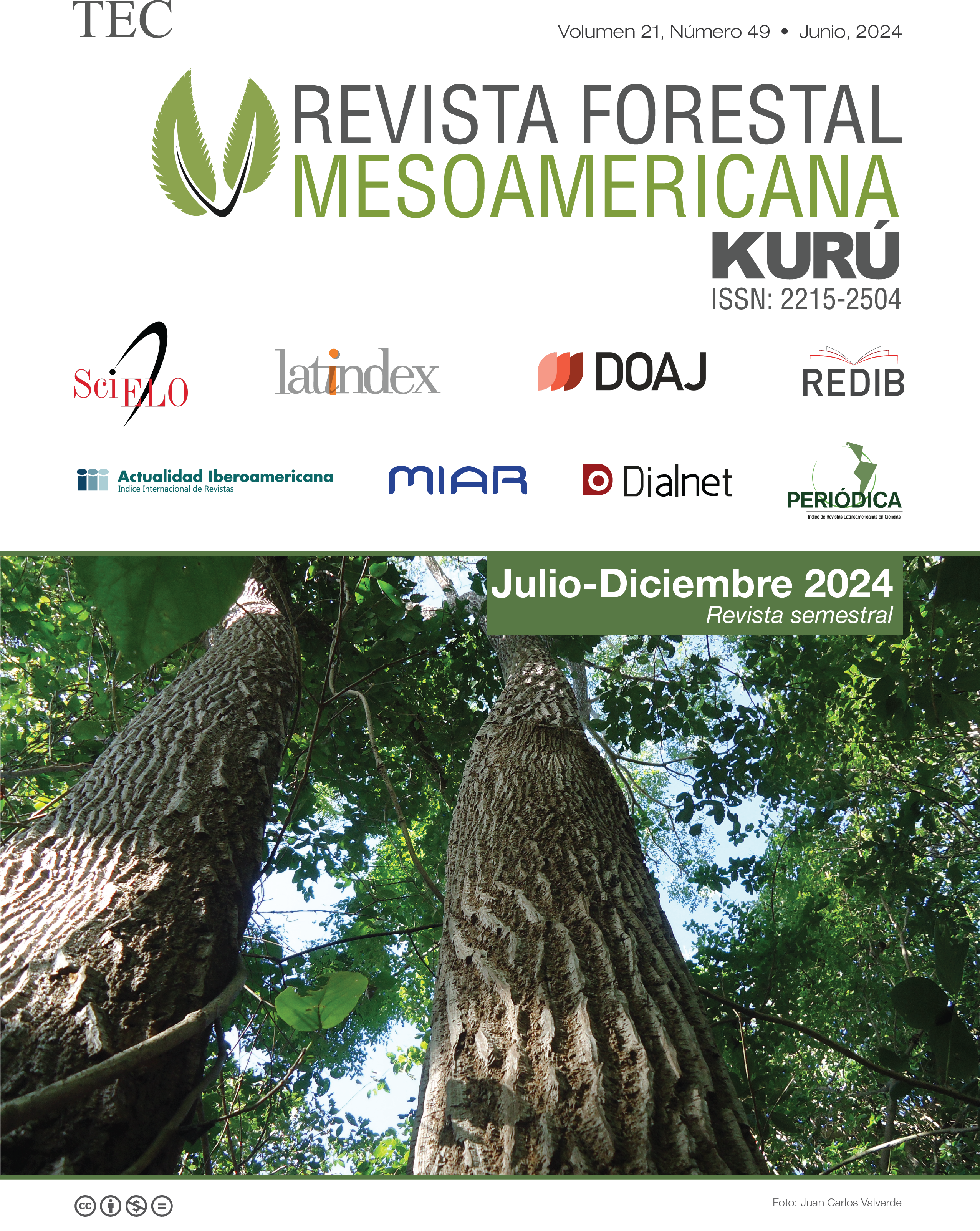Performance of optimal clones of Gmelina arborea Roxb. in terms of growth, quality and trunk rot susceptibility, in the Huetar Norte Region, Costa Rica
Main Article Content
Abstract
Intensive silvicultural clonal experiments with Gmelina arborea seems to be an option to address the low productivity challenged by national producers. However, the quality and health of each clone should be assessed to improve the profitability of the production. We estimated statistical differences and phenotypic superiority (PF) of each clone to characterize the performance in terms commercial volume (CV), quality (C%) and commercial volume quality (VCC) of 15 superior Gmelina genotypes, evaluated in three sites of the Huetar Norte Region. In addition, each genotype was classified according to its susceptibility to the "trunk rot" diseaseThe potential commercial population was identified as the clones above the population average in VCC and the potential breeding population as the genotypes with SF greater than 10% in VCC. The potential commercial populations, the impact on VCC, and the genotypes less susceptible to disease were: Upala site (2.8 years) 53 % of the group, impact 2.21 m3 ha-1, clone 1 not very susceptible. Cutris site (5.9 years) 55 % of the clones, SF of 1.73 m3 ha-1, with the exception of clone 6, this population was less susceptible. Guatuso Site (4.3 years) 61.5 % of the genotypes, would increase the VCC by 3.24 m3 ha-1, of this population clones 7, 11, 6 and 12 present low susceptibility. In the region, there is phenotypic potential to influence positively the profitability of the production units, but it is essential to calculate the genetic parameters that support this.
Article Details

This work is licensed under a Creative Commons Attribution-NonCommercial-NoDerivatives 4.0 International License.
Al enviar un artículo a la Revista Forestal Mesoamericana kurú (RFMK), los autores ceden los derechos patrimoniales a la editorial de la RFMK una vez su manuscrito haya sido aprobado para publicación, autorizando a la RFMK a editarlo, reproducirlo, distribuirlo, y publicarlo en formato físico y/o electrónico, incluido Internet. La titularidad de los derechos morales sobre los trabajos objeto de esta cesión seguirá perteneciendo a los autores.
Este obra está bajo una Licencia Creative Commons Atribución-NoComercial-SinDerivadas 4.0 Unported.


